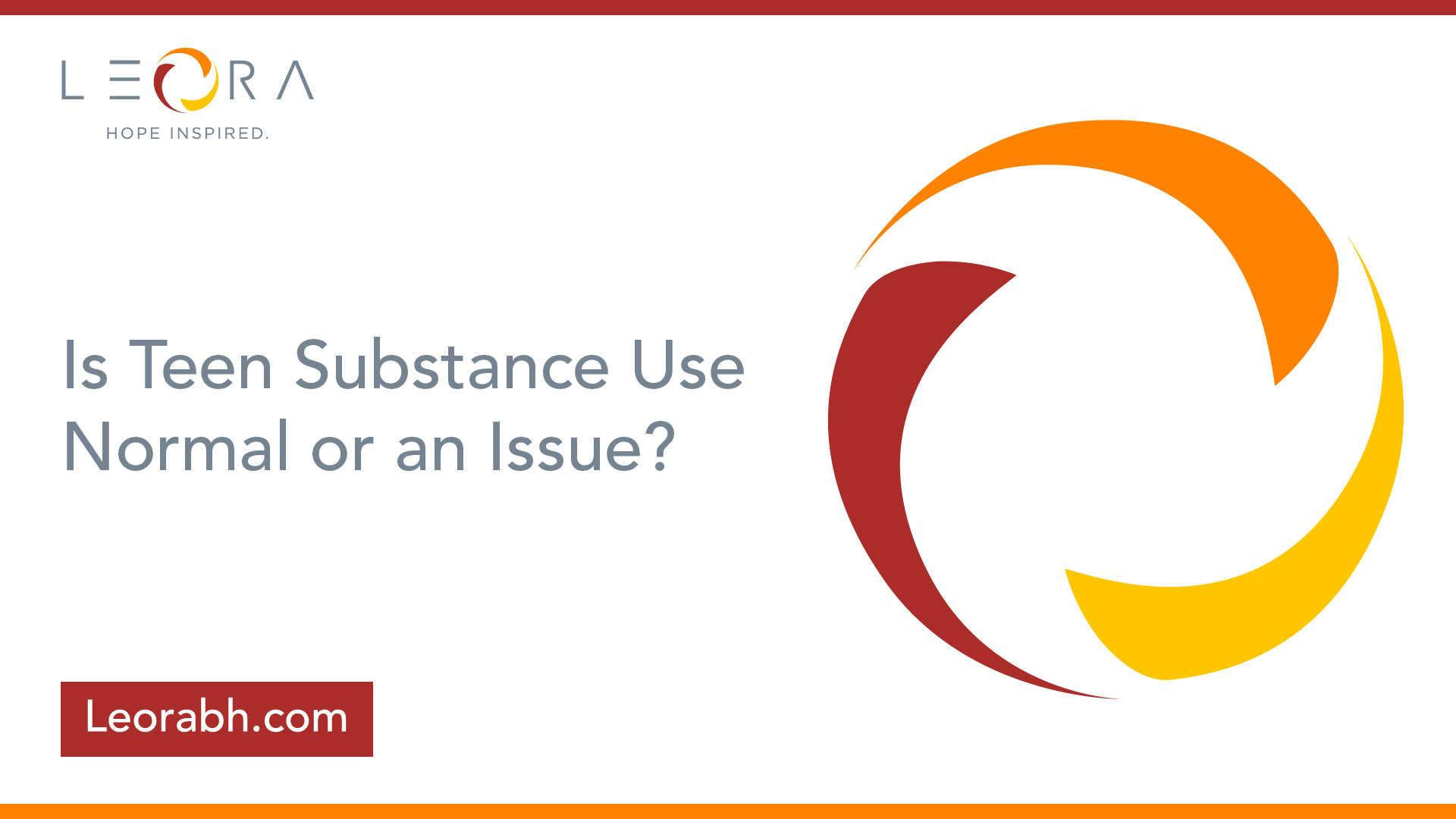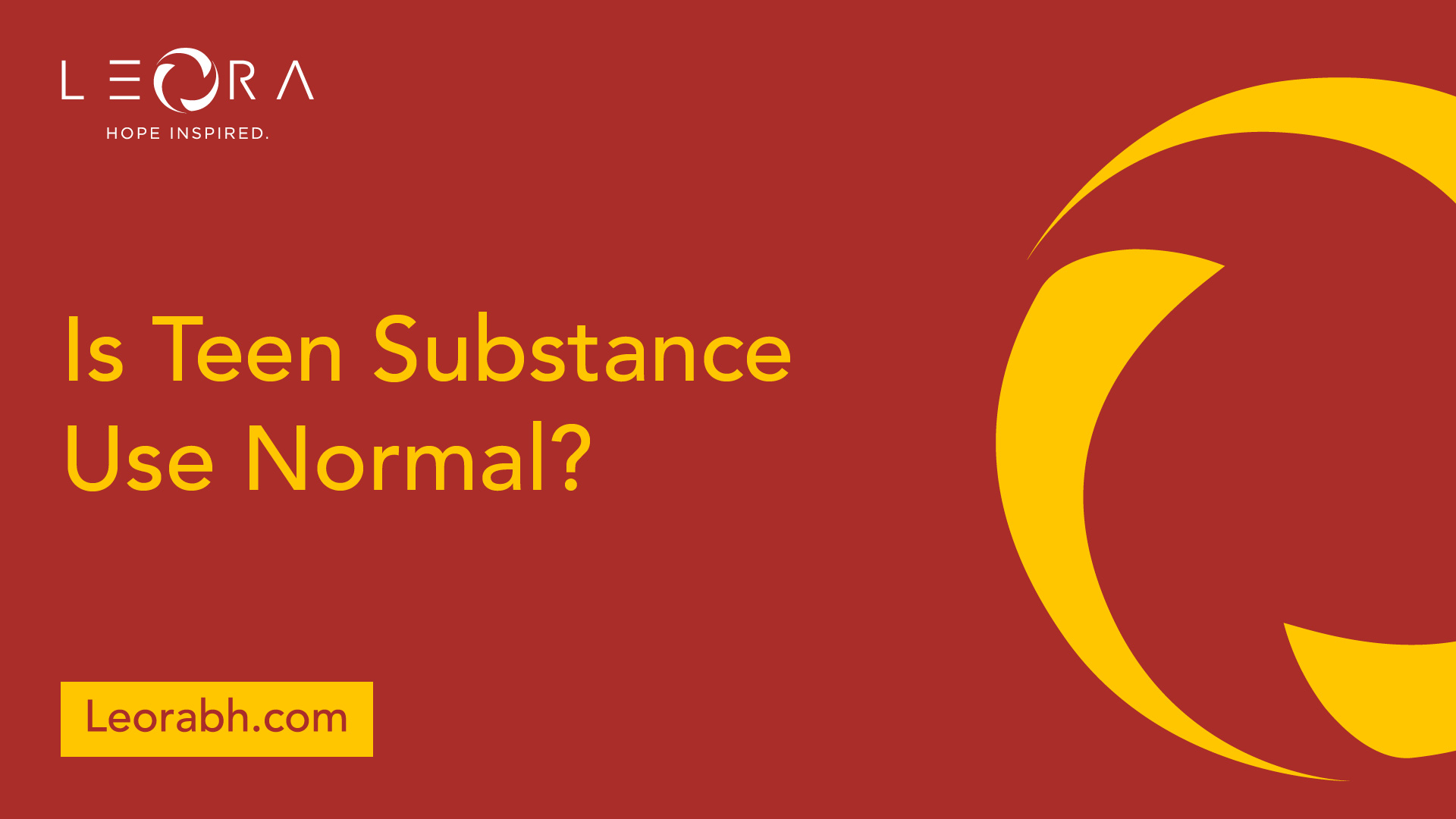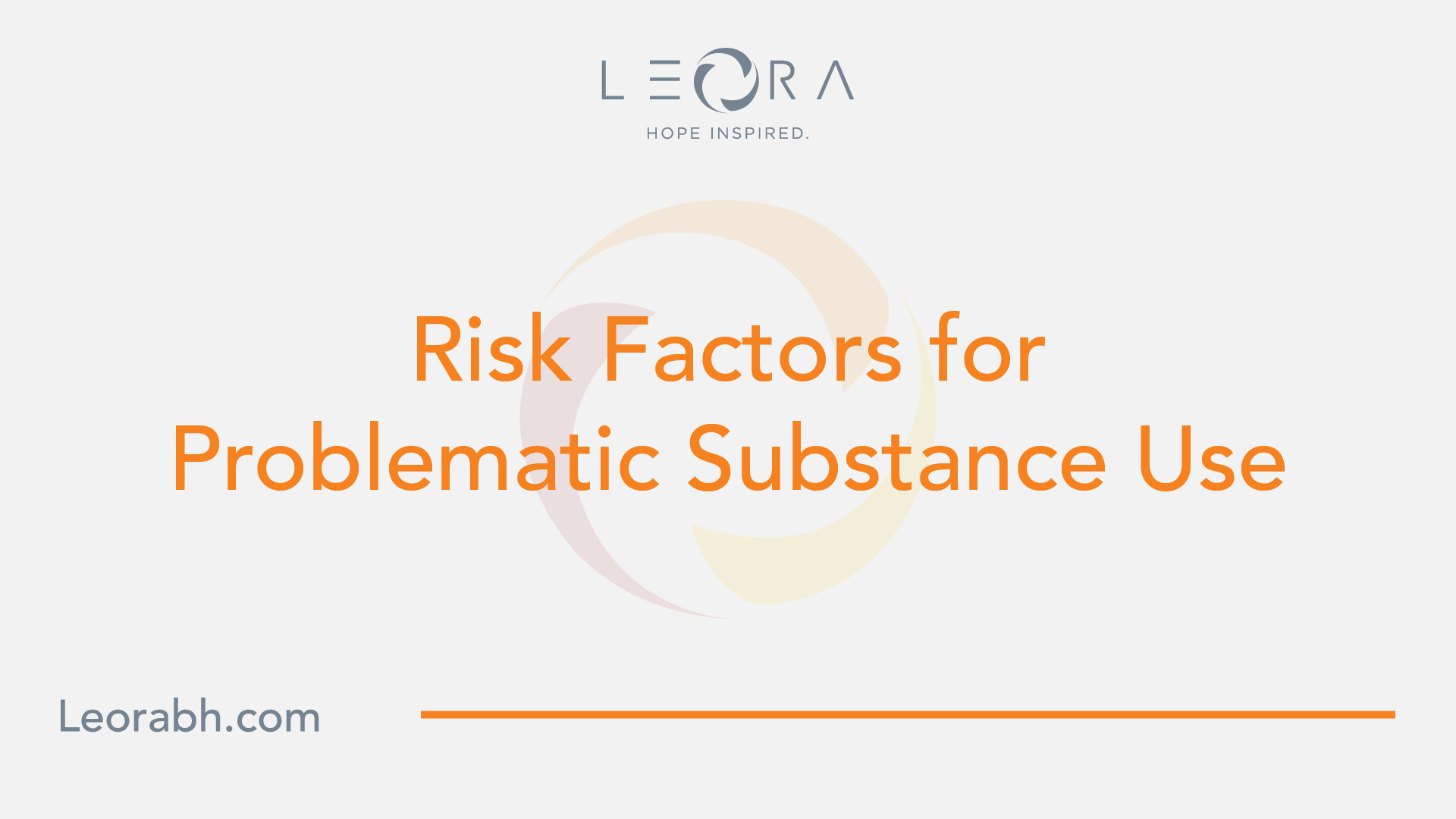Is Teen Substance Use Normal or an Issue?
Unveiling the truth about teen substance use. Is it normal or cause for concern? Find out now!
Understanding Teen Substance Use
To better comprehend the complexities of teen substance use, it is important to gain a comprehensive understanding of the topic. This section will delve into the definition of substance use, the factors that influence teen substance use, and the common substances used by teens.

Definition of Substance Use
Substance use refers to the consumption of substances that can alter a person's mood, behavior, or cognition. These substances may include alcohol, tobacco, marijuana, prescription medications, and illicit drugs. It is essential to differentiate between occasional or experimental substance use and problematic or addictive substance use.
Factors Influencing Teen Substance Use
Various factors contribute to teen substance use, and it is crucial to consider these influences when examining the issue. Some common factors include:
- Peer Influence: Adolescents are often influenced by their peers and may engage in substance use to fit in or seek social acceptance.
- Family Dynamics: Family environment, parental attitudes, and substance use within the family can significantly impact a teenager's likelihood of using substances.
- Media and Advertising: Media portrayal and advertising can shape teenagers' perceptions of substance use and contribute to their curiosity or desire to experiment.
- Availability: The accessibility of substances, whether through friends, family, or the community, can influence a teenager's decision to use them.
Common Substances Used by Teens
Teens may experiment with various substances, and it is important to be aware of the most commonly used ones. Some substances commonly used by teens include:
Substance Prevalence
- Alcohol
- Tobacco and Nicotine
- Marijuana
- Prescription Medications
It is crucial to understand that while experimentation with substances is not uncommon during adolescence, the frequency, quantity, and context of use determine whether it falls within a normal range or becomes problematic.
By understanding the definition of substance use, the factors that influence teen substance use, and the common substances used by teens, we can gain greater insight into this complex issue. This knowledge is essential for recognizing and addressing potential concerns related to teen substance use.

Is Teen Substance Use Normal?
When it comes to teen substance use, many parents and guardians often wonder whether it is a normal part of adolescent development or a cause for concern. In this section, we will explore normal adolescent development and discuss how to recognize the line between normal and problematic substance use.
Exploring Normal Adolescent Development
During adolescence, teens undergo significant physical, emotional, and social changes as they transition into adulthood. Experimentation and risk-taking behaviors are a normal part of this developmental stage as teens strive for independence and identity formation. It is not uncommon for teens to be curious about substances and engage in experimental substance use.
However, it's important to note that not all teens will engage in substance use, and the degree to which they experiment can vary. Factors such as family values, peer influence, and individual personality traits can impact a teen's likelihood of engaging in substance use. It is crucial for parents and guardians to have open and honest conversations with their teens about the risks and consequences associated with substance use. By providing guidance and setting clear expectations, adults can help steer their teens towards making healthier choices.

Recognizing the Line Between Normal and Problematic Substance Use
While experimentation with substances can be considered a normal part of adolescent development, it is essential to distinguish between normal use and problematic use. Problematic substance use refers to patterns of behavior that can have negative consequences on a teen's physical and mental health, academic performance, and social relationships.
Some signs that may indicate problematic substance use include:
Behavioral and Emotional Changes
- Increased secrecy and withdrawal from family and friends
- Changes in mood, such as irritability, aggression, or depression
- Decline in academic performance or loss of interest in previously enjoyed activities
- Engaging in risky behaviors or getting into trouble with authorities
Physical and Health Indicators
- Changes in sleep patterns, appetite, or weight
- Frequent headaches, nausea, or unexplained physical ailments
- Bloodshot eyes, dilated or constricted pupils, or unexplained body odor
Academic and Social Impacts
- Decline in grades or absenteeism from school
- Changes in friendships or social circles
- Conflict with peers, teachers, or family members
Recognizing these signs early on can help parents, guardians, and educators intervene and provide the necessary support. If you suspect that your teen may be struggling with problematic substance use, it is important to seek professional help. School counselors, community resources, and healthcare professionals can offer guidance, assessment, and appropriate treatment options.
Understanding the nuances between normal adolescent development and problematic substance use is crucial for parents and guardians. By staying informed and maintaining open lines of communication, adults can play a vital role in guiding their teens towards making healthier choices and seeking help when needed.
Risk Factors for Problematic Substance Use
Teen substance use can be influenced by a variety of factors. Understanding these risk factors is essential in identifying and addressing potential issues. Here, we explore three key categories of risk factors: genetic and biological factors, environmental and social factors, and mental health and co-occurring disorders.
Genetic and Biological Factors
Genetic and biological factors play a role in determining an individual's susceptibility to substance use. Research has shown that certain genetic variations can increase the likelihood of developing substance use disorders. Additionally, factors such as family history of substance use, age of onset of use, and sensitivity to the effects of substances can contribute to the risk.
Risk Factor Description
- Genetic Variations: Certain genetic variations can increase the risk of substance use disorders.
- Family History: Having a family history of substance use can increase the likelihood of developing problematic substance use.
- Age of Onset: Early initiation of substance use is associated with an increased risk of developing substance use disorders.
- Sensitivity to Substances: Some individuals may be more sensitive to the effects of substances, making them more susceptible to problematic use.
Environmental and Social Factors
The environment in which a teenager grows up can significantly impact their risk of developing problematic substance use. These factors include peer influence, family dynamics, socioeconomic status, availability of substances, and exposure to trauma or stress.
Risk Factor Description
- Peer Influence: The influence of friends and peers can greatly impact a teenager's decision to use substances.
- Family Dynamics: Family factors such as parental substance use, poor communication, and lack of parental involvement can contribute to the risk.
- Socioeconomic Status: Lower socioeconomic status and associated stressors can increase the risk of substance use.
- Substance Availability: Easy access to substances, either within the home or the community, can contribute to the risk of use.
- Exposure to Trauma or Stress: Traumatic events or chronic stress can increase the likelihood of substance use as a coping mechanism.
Mental Health and Co-occurring Disorders
The presence of mental health conditions can increase the risk of problematic substance use among teenagers. Conditions such as depression, anxiety, ADHD, and conduct disorders can contribute to the development of substance use disorders. This co-occurrence of mental health and substance use disorders often requires specialized treatment approaches.
Risk Factor Description
- Mental Health Conditions: Conditions such as depression, anxiety, ADHD, and conduct disorders increase the risk of substance use disorders.
- Co-occurring Disorders: The co-occurrence of mental health and substance use disorders requires integrated treatment approaches.
Understanding these risk factors can assist in identifying teenagers who may be at a higher risk of developing problematic substance use. It is important to remember that the presence of risk factors does not guarantee substance use, but rather highlights the need for preventive measures and support.
Recognizing the signs of problematic substance use in teenagers is crucial for early intervention and support. It is important to keep in mind that these signs may vary depending on the individual and the specific substance involved. In this section, we will explore three key categories of signs: behavioral and emotional changes, physical and health indicators, and academic and social impacts.
Behavioral and Emotional Changes
One of the primary indicators of problematic substance use in teenagers is the presence of significant behavioral and emotional changes. These changes can manifest in various ways and may differ from person to person. Some common signs include:
- Sudden changes in mood or behavior, such as increased irritability, aggression, or mood swings.
- Loss of interest in activities that were once enjoyed, including hobbies, sports, or socializing with friends.
- Withdrawal from family and friends, leading to increased isolation and secrecy.
- Decreased motivation or performance in school, such as a decline in grades or increased absenteeism.
- Engaging in risky or dangerous behaviors, such as driving under the influence or participating in unsafe sexual activities.
It is essential to approach these changes with empathy and understanding, as they may indicate underlying substance use issues that require intervention and support.
Physical and Health Indicators
Physical and health indicators can provide valuable insights into potential problematic substance use in teenagers. While these signs can vary depending on the substance involved, some general indicators to watch out for include:
- Bloodshot eyes or dilated pupils.
- Frequent nosebleeds or unexplained nose or throat irritation.
- Sudden and unexplained weight loss or gain.
- Changes in appetite or sleep patterns.
- Poor personal hygiene or neglecting physical appearance.
- Tremors, slurred speech, or impaired coordination.
If you notice any of these physical or health indicators in a teenager, it is important to address the situation promptly and seek appropriate help.
Academic and Social Impacts
Problematic substance use can have significant impacts on a teenager's academic performance and social interactions. Some signs to look out for include:
- Decline in academic performance, such as a sudden drop in grades or disinterest in schoolwork.
- Increased absenteeism or tardiness.
- Loss of interest in extracurricular activities or a decrease in participation.
- Conflict with teachers, classmates, or school administrators.
- Changes in social circles or friends, particularly if they are also exhibiting signs of substance use.
These academic and social impacts can be indicative of underlying substance use issues that require intervention and support to prevent further negative consequences.
By being aware of the signs of problematic substance use in teenagers, parents, educators, and friends can take appropriate action to help the individual navigate through this challenging period. If you suspect that a teenager may be struggling with substance use, it is important to reach out for guidance from professionals and utilize available resources.
Seeking Help and Support
When it comes to addressing teen substance use, seeking help and support is crucial for both the teenager and their loved ones. There are various resources available to assist in navigating this challenging situation. This section explores the role of parents and guardians, school and community resources, as well as professional intervention and treatment options.
Role of Parents and Guardians
Parents and guardians play a vital role in supporting teenagers dealing with substance use. It's important for parents to create an open and non-judgmental environment where teens feel comfortable discussing their struggles. Some key steps parents can take include:
- Educating themselves about substance use and its potential consequences.
- Communicating openly and honestly with their teenager, expressing concern and offering support.
- Setting clear expectations and boundaries regarding substance use.
- Monitoring their teen's activities and social connections to help reduce exposure to substances.
- Seeking professional help and guidance when needed.
By being actively involved in their teenager's life, parents and guardians can provide the necessary support and guidance to help address substance use concerns.
School and Community Resources
Schools and communities also play a crucial role in supporting teenagers facing substance use challenges. Many educational institutions have counseling services and prevention programs in place to address substance use among students. These resources may include:
- School counselors who can provide guidance and support to both teenagers and their families.
- Substance abuse prevention programs that educate students about the risks associated with substance use.
- Peer support groups or clubs that offer a safe space for teens to discuss their experiences and seek guidance.
- Community organizations that provide substance abuse prevention and treatment services.
By utilizing these resources, teenagers and their families can access the support they need within their school and local community.
Professional Intervention and Treatment Options
In some cases, professional intervention and treatment may be necessary to address problematic substance use. There are various options available that cater specifically to teenagers struggling with substance use. These options may include:
- Outpatient counseling: This involves regular counseling sessions with a trained therapist to address the underlying causes of substance use and develop coping strategies.
- Inpatient rehabilitation: In severe cases, an inpatient rehabilitation program may be recommended. This involves a structured and intensive treatment program where teenagers reside at a treatment facility temporarily.
- Support groups: Support groups such as Alcoholics Anonymous (AA) or Narcotics Anonymous (NA) can provide teenagers with a supportive community of individuals facing similar challenges.
It's important to consult with healthcare professionals or addiction specialists to determine the most appropriate course of action based on the individual needs of the teenager.
Remember, seeking help and support is a crucial step in addressing teen substance use. By involving parents, utilizing school and community resources, and considering professional intervention and treatment options, teenagers can receive the necessary guidance and support to overcome substance use challenges.
Sources
Find Your Inner Light
Related Articles
Contact Us
Leora Behavioral Health offers a comprehensive addiction treatment programs to help you get your life back on track.
Our trained professionals will work with you to develop a personalized treatment plan that meets your unique needs. If you or someone you know is struggling with addiction, reach out to Leora Behavioral Health today.


.svg)





.svg)
.svg)
.svg)
.svg)